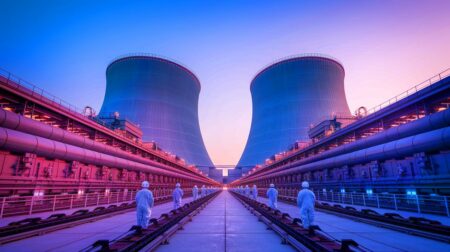Cyanobacteria, also known as blue-green algae, are aquatic microorganisms whose evolutionary lineage stretches back 3.5 billion years, right to the first stirrings of life on Earth. They were responsible for releasing the first oxygen molecules into the planet’s atmosphere, thereby helping pave the way for new lifeforms that began to breathe oxygen.
Cyanobacteria are still prominent today, inhabiting ponds, lakes and other aquatic environments. They are a unique type of bacteria in that they obtain their energy from photosynthesis, like plants. People have taken advantaged of these single-celled organisms, which tend to live in large colonies, by using them as fertilizers for the cultivation of beans and rice.
It turns out, though, that they could soon be used for another even more useful purpose: to generate electricity. Scientists at the Technion in Haifa, Israel, have developed an energy-producing system that harnesses the bacteria’s ability to generate energy directly from sunrays.
For photosynthesis, cyanobacteria rely on their phycobilisomes (PBS), as their antenna-like stacks of chromophorylated proteins are known, by help of which they can absorb a wide spectrum of sunlight intensities and wavelengths. Energy from the sun’s rays is channeled to chemical reaction centers within the bacteria where water is broken down into hydrogen.

The team of researchers at Technion, who published their findings in the journal Nature, devised a way to divert the hydrogen the bacteria produce to generate electricity. “No mechanical process is required to generate the power, and no fossil fuels need to be burned in order to produce the electricity,” a report of their accomplishment explains.
Harvesting photocurrents used by live bacteria for hydrogen production can be done in a “non-harmful gentle physical treatment of the cyanobacterial cells [which] enables light-driven electron transfer by an endogenous mediator to a graphite electrode in a bio-photoelectrochemical cell, without the addition of sacrificial electron donors or acceptors,” the researchers write. “[T]he current [can be] utilized for hydrogen evolution on the cathode at a bias of 0.65 V. Taken together, we present a bio-photoelectrochemical system where live cyanobacteria produce stable photocurrent that can generate hydrogen.”
Work could soon be underway on designs of future power plants that will exploit the electricity-generating potential of these minute creatures. Large colonies of these bacteria could simply go on living at these plants while simultaneously producing hydrogen, which could then be harnessed to power our homes and businesses.
“In the recent past, utilization of biological systems for environmentally clean energy production has been offered as an attractive alternative to the use of fossil fuels,” the study’s authors explain. “Our results … show that cyanobacteria offer a unique opportunity to fully utilize the potential of biological energy conversion systems.”
Did you like it? 4.6/5 (28)








